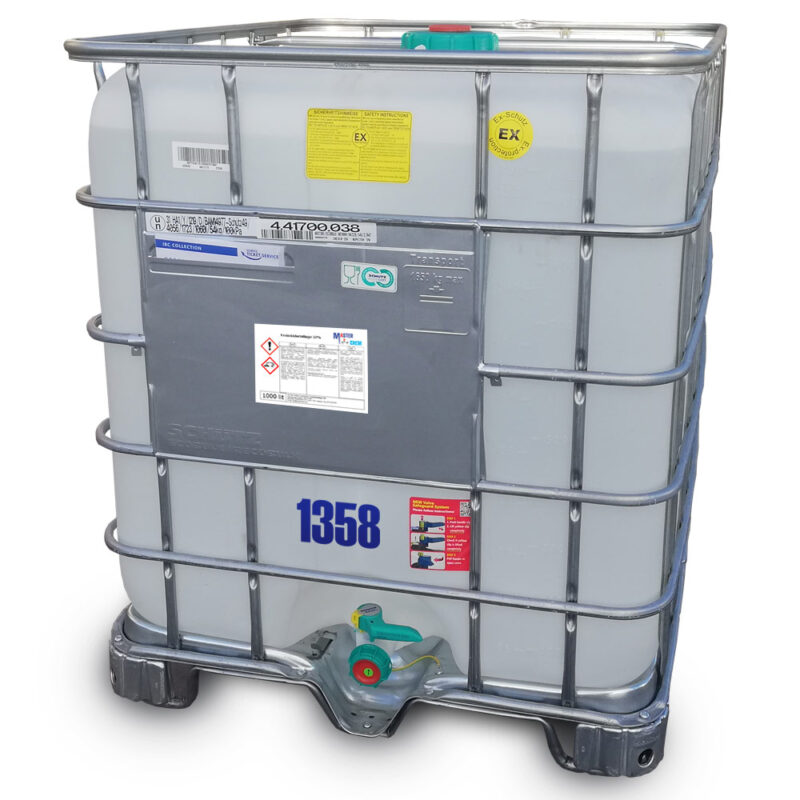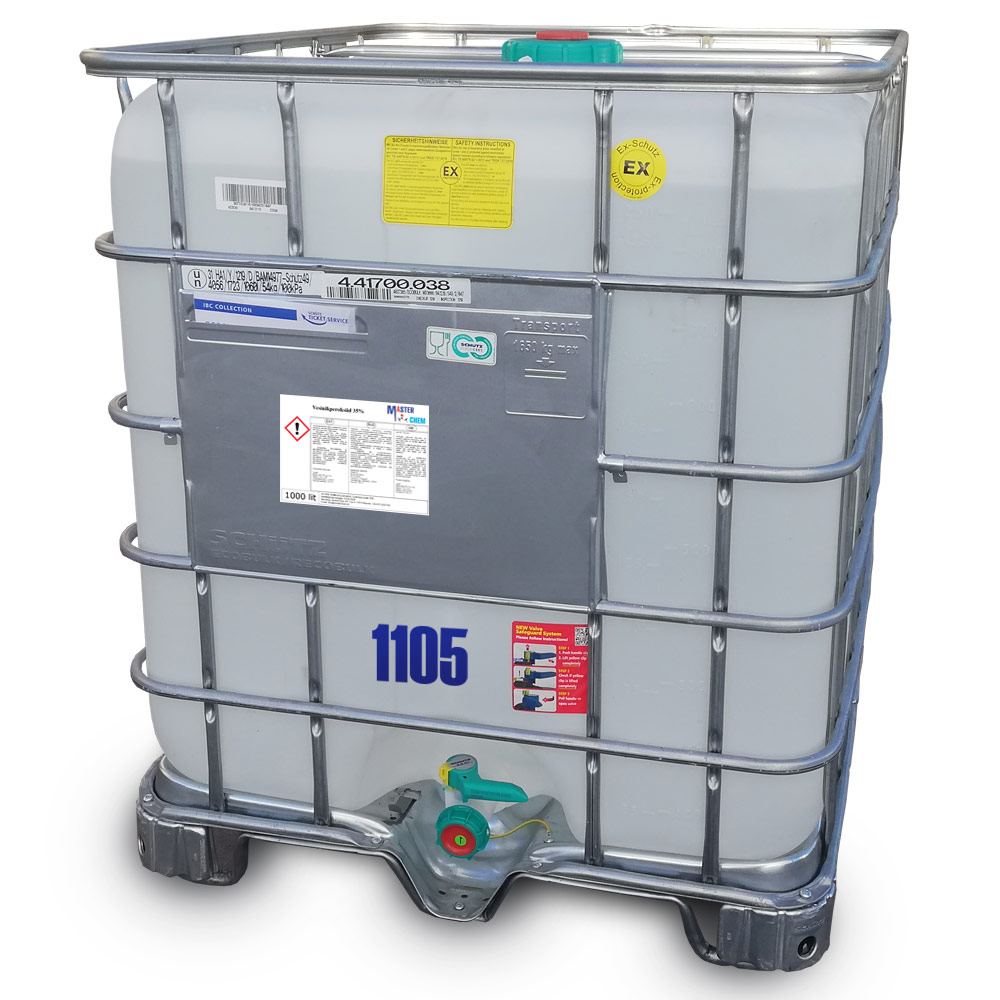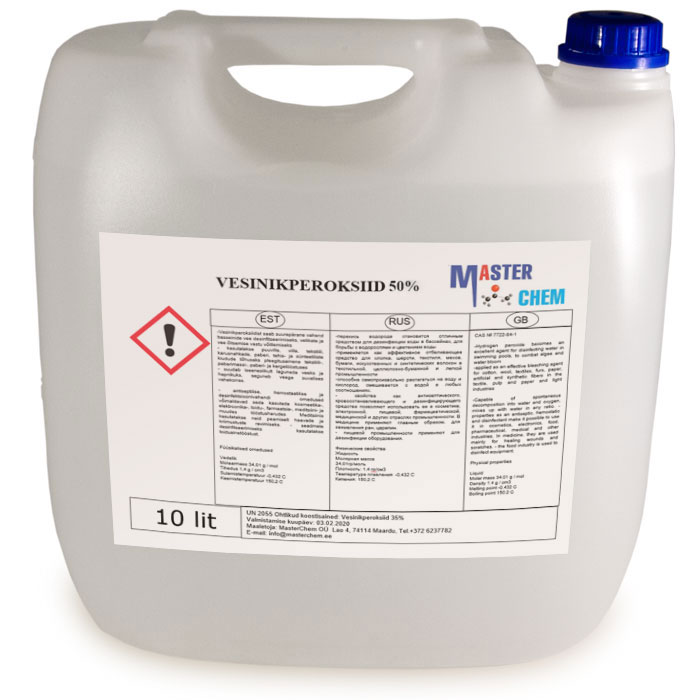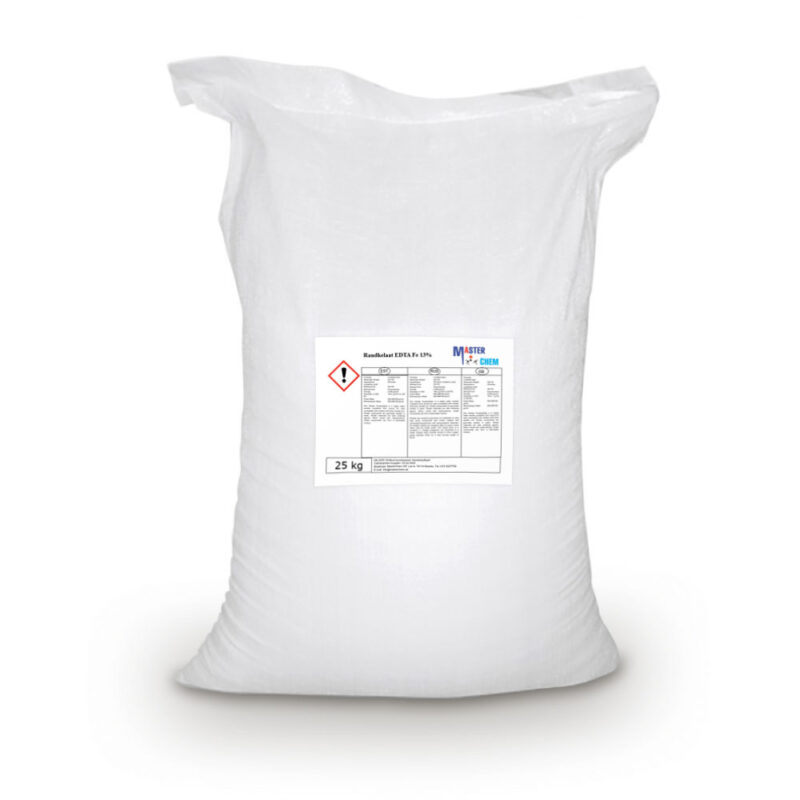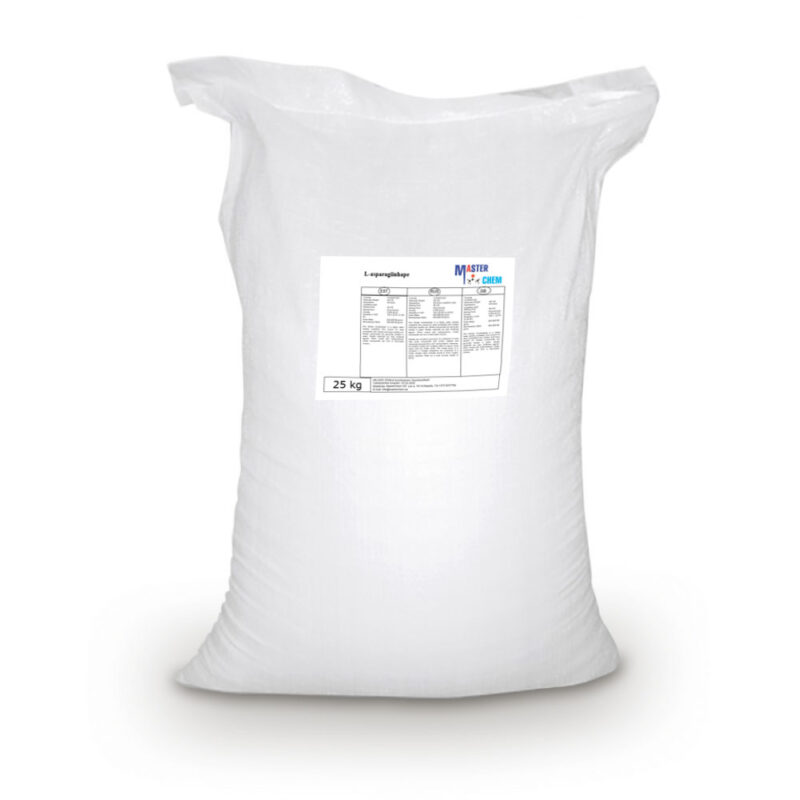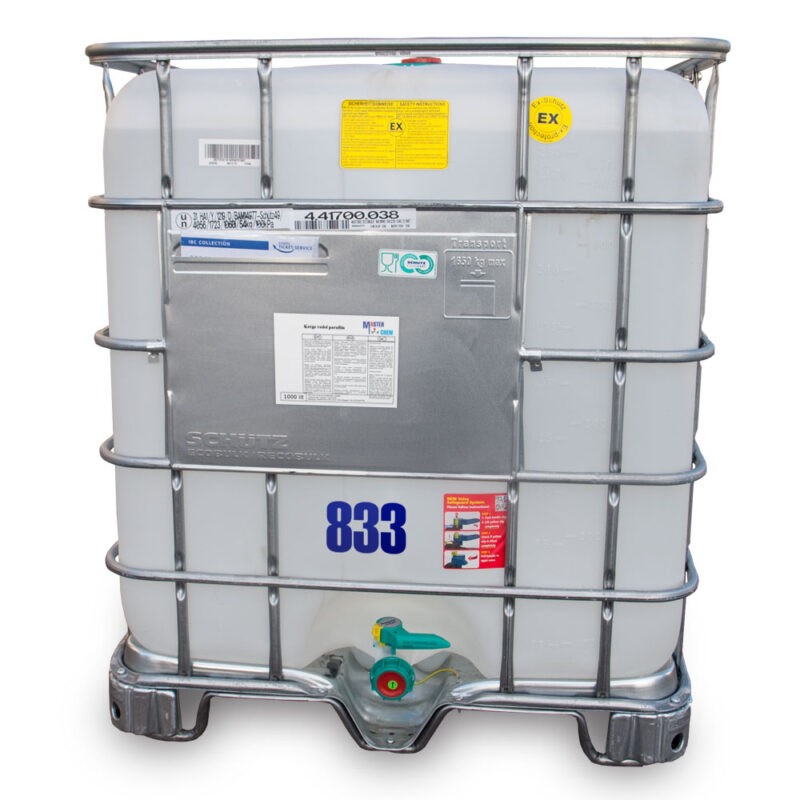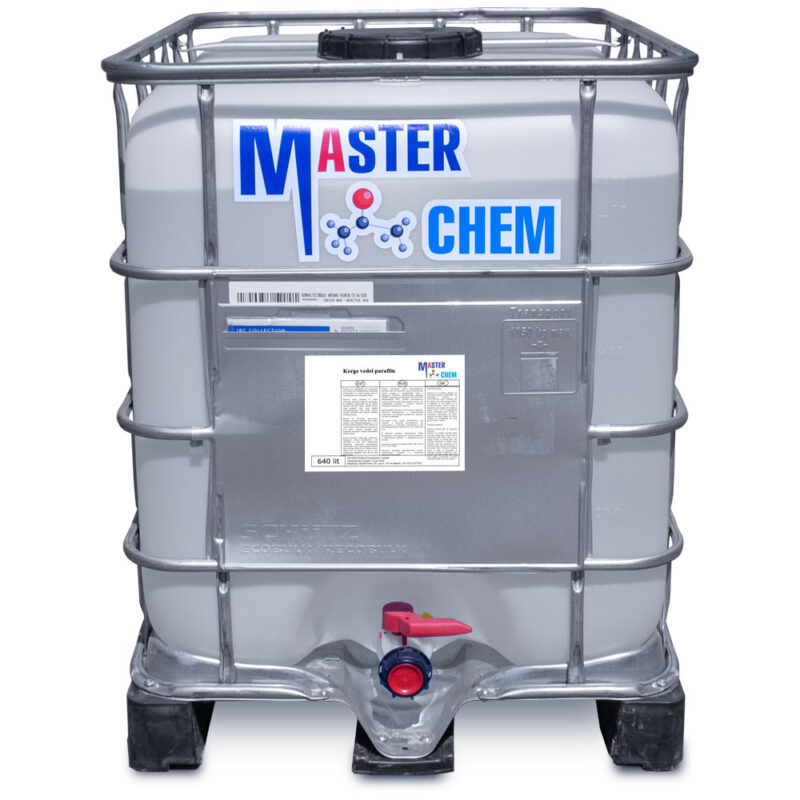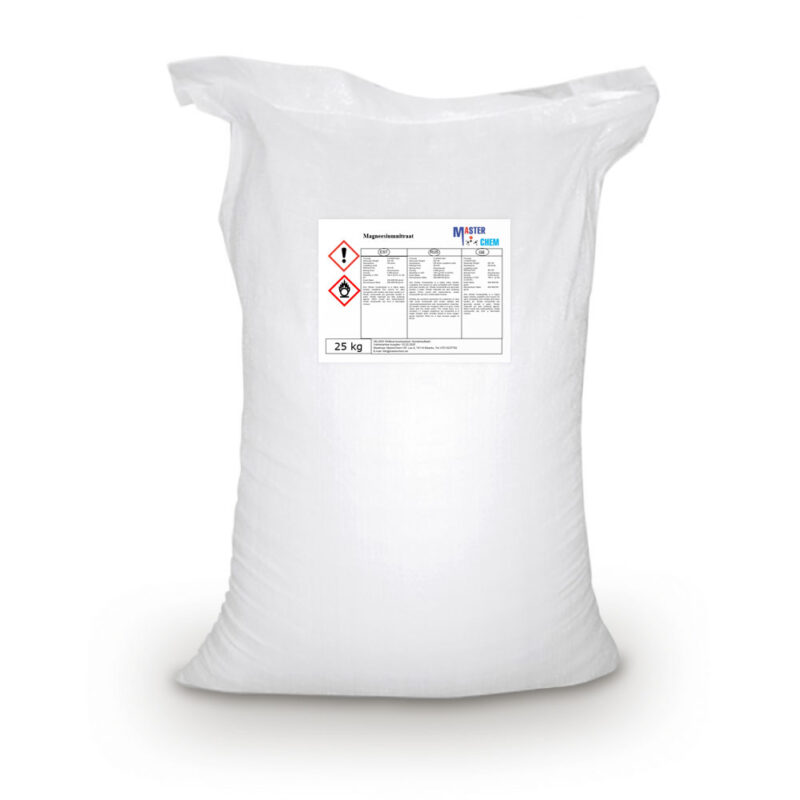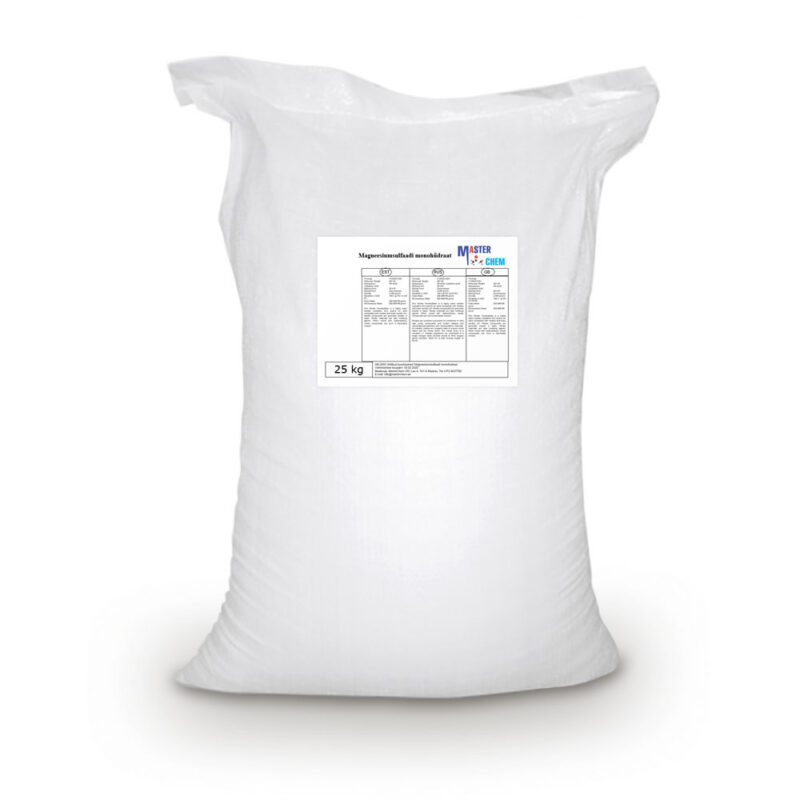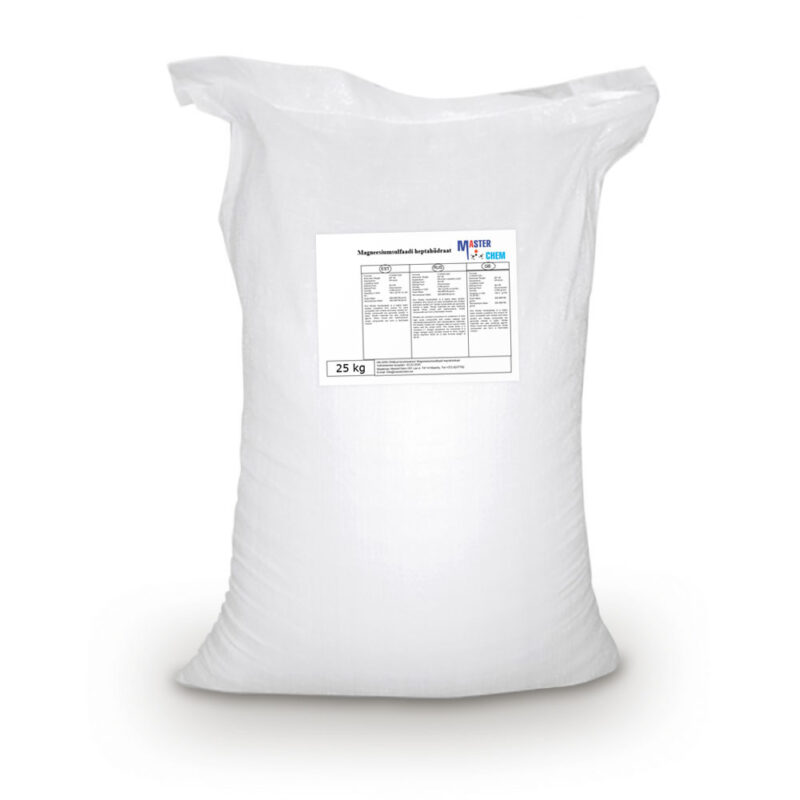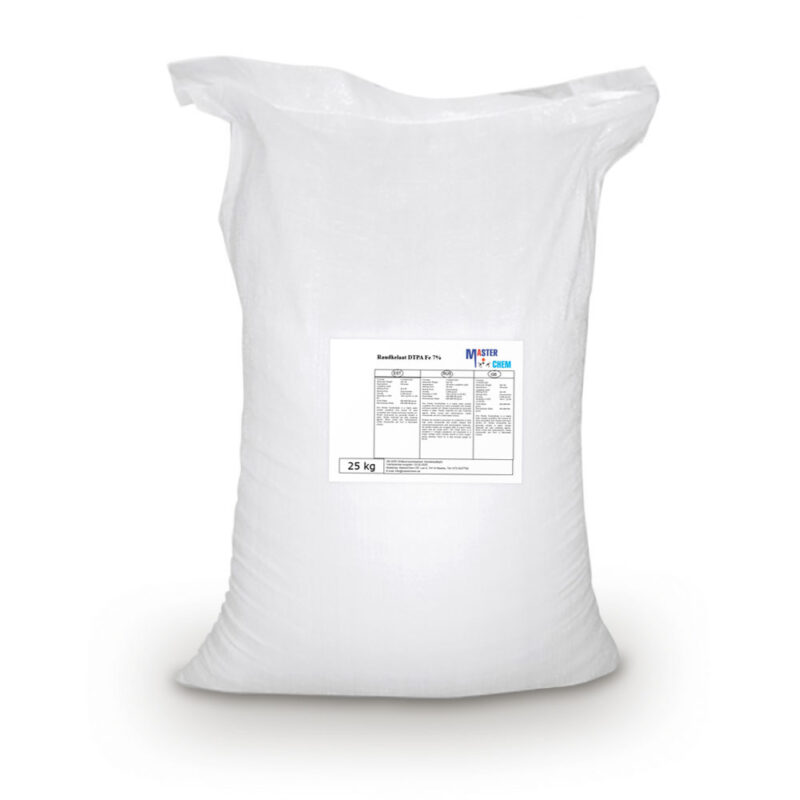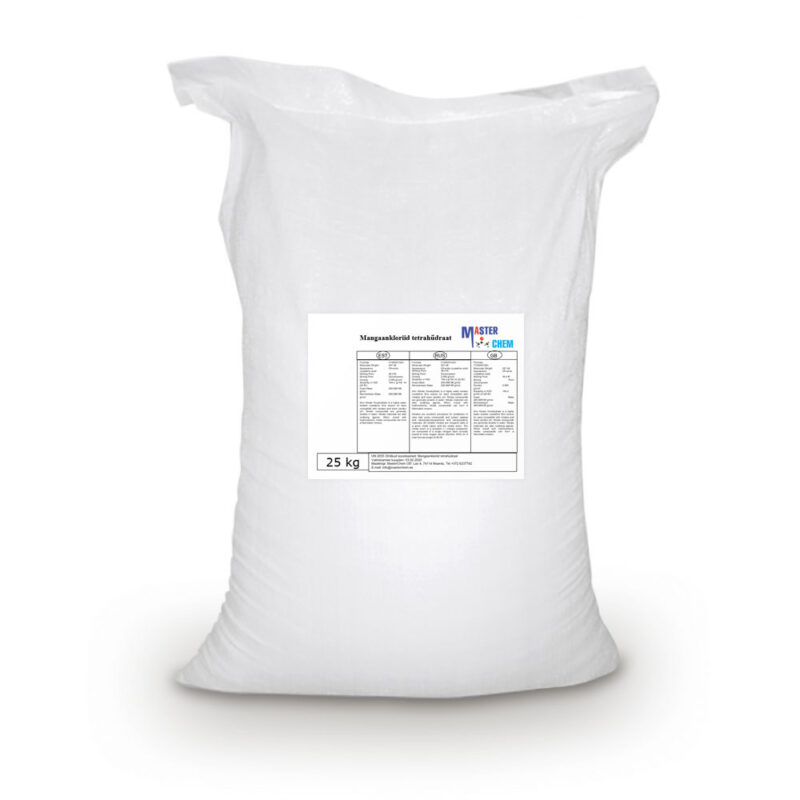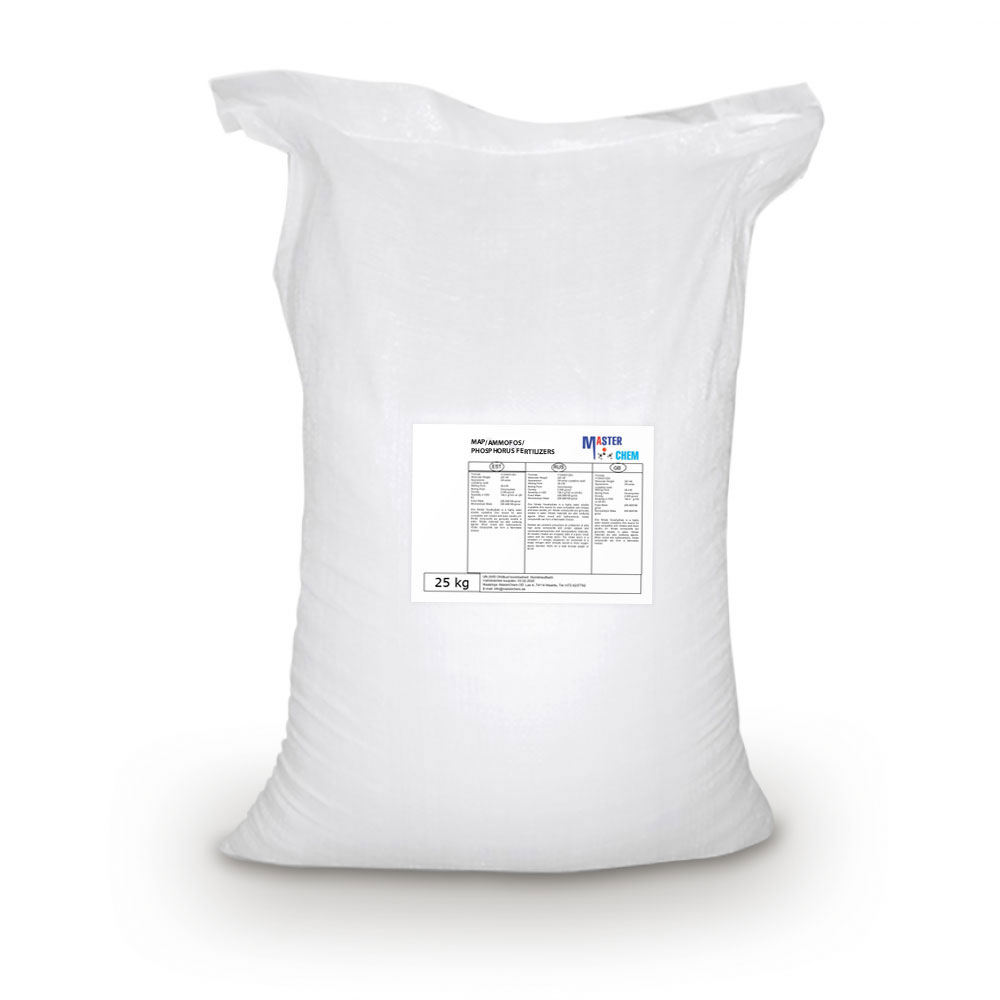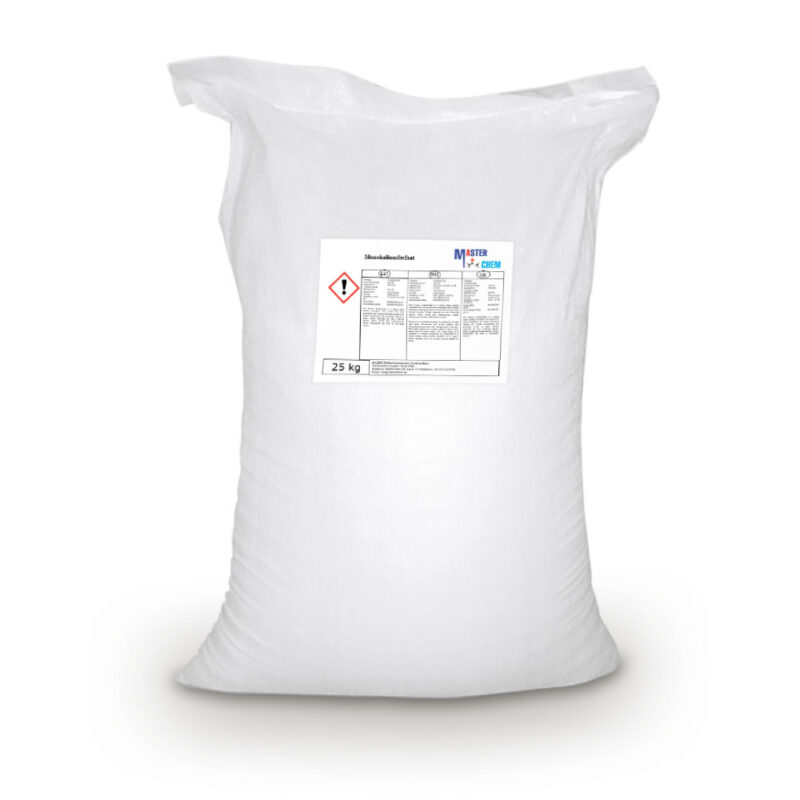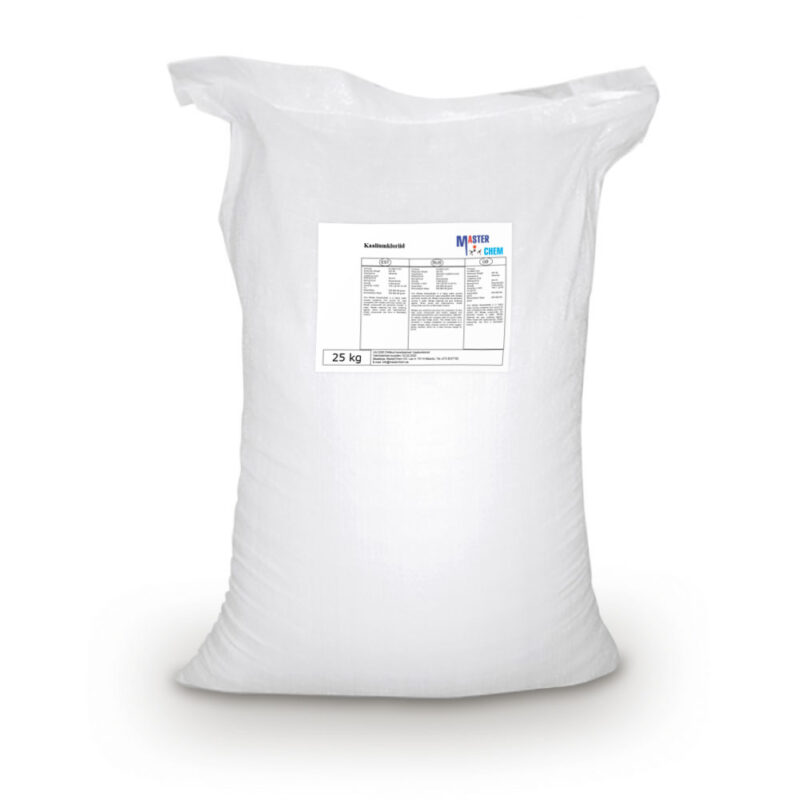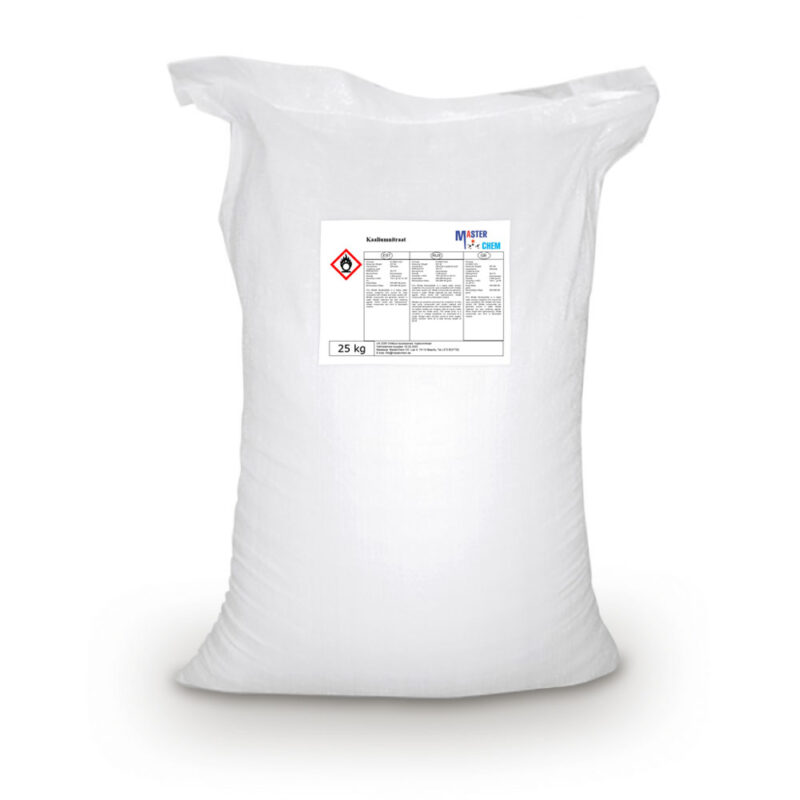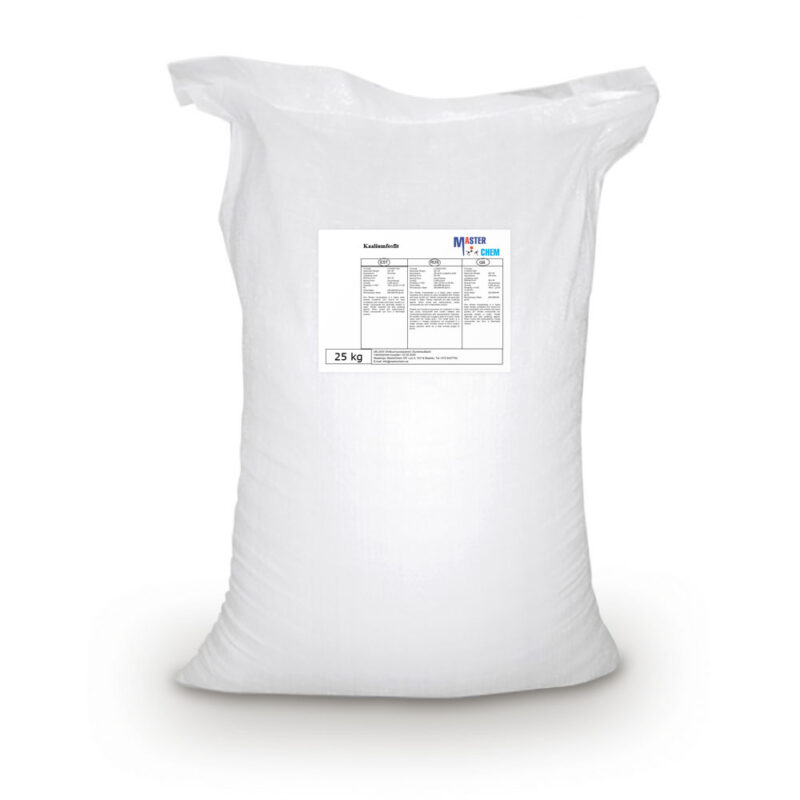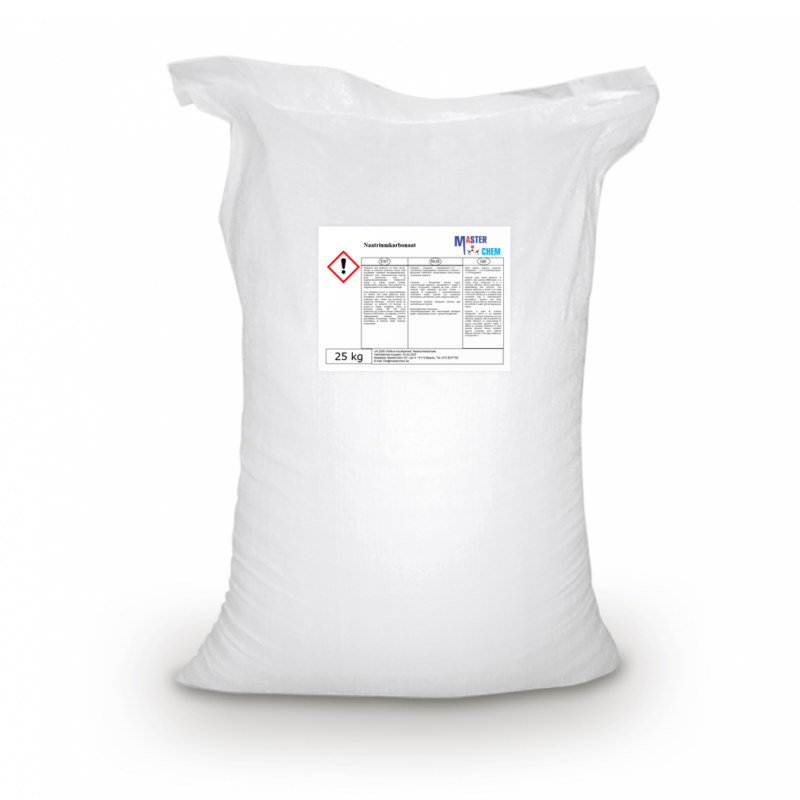Hydrochloric Acid 33%, 37% (CAS 7647-01-0)
Hydrochloric Acid 33%, 37% (CAS 7647-01-0)
Hydrochloric acid, also known as muriatic acid, is an aqueous solution of hydrogen chloride. It is a colorless solution with a distinctive pungent smell. It is classified as a strong acid. It is a component of the gastric acid in the digestive systems of most animal species, including humans. Hydrochloric acid is an important laboratory reagent and industrial chemical.
Physical properties of hydrochloric acid, such as boiling and melting points, density, and pH, depend on the concentration or molarity of HCl in the aqueous solution. They range from those of water at very low concentrations approaching 0% HCl to values for fuming hydrochloric acid at over 40% HCl.
Hydrochloric acid as the binary (two-component) mixture of HCl and H2O has a constant-boiling azeotrope at 20.2% HCl and 108.6 °C (227 °F). There are four constant-crystallization eutectic points for hydrochloric acid, between the crystal form of [H3O]Cl (68% HCl), [H5O2]Cl (51% HCl), [H7O3]Cl (41% HCl), [H3O]Cl·5H2O (25% HCl), and ice (0% HCl). There is also a metastable eutectic point at 24.8% between ice and the [H7O3]Cl crystallization. They are all Hydronium salts.
Hydrogen peroxide 50% (CAS 7722-84-1)
CAS № 7722-84-1
Hydrogen peroxide 50%
– colorless liquid with a metallic taste, easily soluble in water, alcohol and ether
Application
-Hydrogen peroxide becomes an excellent agent for disinfecting water in swimming pools, to combat algae and water bloom
-applied as an effective bleaching agent for cotton, wool, textiles, furs, paper, artificial and synthetic fibers in the textile, pulp and paper and light industries
-Capable of spontaneous decomposition into water and oxygen, mixes up with water in any ratio. – properties as an antiseptic, hemostatic and disinfectant make it possible to use it in cosmetics, electronics, food, pharmaceutical, medical and other industries. In medicine, they are used mainly for healing wounds and scratches. – the food industry is used to disinfect equipment.
Iron chelate DTPA Fe 7% (CAS 85959-68-8)
Iron chelate DTPA Fe 7% (CAS 85959-68-8)
Iron chelate DTPA Fe 7% is an iron chelate, which can be used to ensure the intake of the trace element iron. Iron is essential to the crop, since it gives the crop the possibility to develop chloroplasts. These presence of the chloroplasts is crucial, because they are needed in the process of photosynthesis. In addition, iron serves as a nutrient that lets the growth points in the root develop properly.
Thanks to the DTPA chelate, to which he iron is bound, the nutrient remains available to the crop when it reaches the roots or when it is put in the fertilizer solution. With the help of iron chelates, symptoms of deficiency can be prevented, contributing to an optimal growth of the plant.
Iron chelate EDTA Fe 13% (CAS 15708-41-5)
Iron chelate EDTA Fe 13% (CAS 15708-41-5)
Introduction: EDTA ferric sodium salt is the ferric sodium salt of EDTA (Ethylene Diamine Tetraacetic Acid). It is a broad-spectrum molluscicide that is capable of killing snails and slugs and protecting agricultural crops and garden plants. In particular, it can eliminate infestations of Cornu aspersum, the common garden snail. It takes effect through interacting with and destroying hemocyanin, a copper based compound existing in the blood of molluscs and anthropods that is engaged in carrying oxygen (play a similar role with hemoglobin invertebrates). It is capable of killing snails and slugs in a few days. It can also be used as a food fortifier and a source of iron to be supplemented to the foods for nutrition purposes.
L-Ascorbic Acid (CAS 50-81-7)
L-Ascorbic Acid (CAS 50-81-7)
Vitamin C (also known as ascorbic acid and ascorbate) is a vitamin found in various foods and sold as a dietary supplement. It is used to prevent and treat scurvy. Vitamin C is an essential nutrient involved in the repair of tissue, the formation of collagen, and the enzymatic production of certain neurotransmitters. It is required for the functioning of several enzymes and is important for immune system function. It also functions as an antioxidant. Most animals are able to synthesize their own vitamin C, although apes (including humans) and monkeys (but not all primates), most bats, some rodents, and certain other animals must acquire it from dietary sources.
L-Asparaginic Acid (CAS 56-84-8)
L-Asparaginic Acid (CAS 56-84-8)
Aspartic acid (symbol Asp or D; the ionic form is known as aspartate), is an α-amino acid that is used in the biosynthesis of proteins. Like all other amino acids, it contains an amino group and a carboxylic acid. Its α-amino group is in the protonated –NH+
3 form under physiological conditions, while its α-carboxylic acid group is deprotonated −COO− under physiological conditions. Aspartic acid has an acidic side chain (CH2COOH) which reacts with other amino acids, enzymes and proteins in the body. Under physiological conditions (pH 7.4) in proteins the side chain usually occurs as the negatively charged aspartate form, −COO−. It is a non-essential amino acid in humans, meaning the body can synthesize it as needed. It is encoded by the codons GAT and GAC. In mRNA, CUA and CUG.
Light liquid paraffin (CAS 8042-47-5)
Light liquid paraffin (CAS 8042-47-5)
Light Liquid Paraffin Oil Ip is used in the manufacture of Antistatic Coning oil, Knitting oil & other Textile Auxiliaries, Plant Spray Oil, Agrochemicals, Aerosols, Dye Intermediates, Paper Industry; Perfumery, Food Grade Speciality Lubricants, Food Grade Plastics used as a Lubricant Plasticizer, Attars, Flavours & Fragrances, Perfumery Chemicals, Speciality Chemicals, Incenses, Personal Care Products, Leather Chemicals, Fat Liquors, Petrochemical Solvents, etc. It may also be used in the manufacture of Pharmaceuticals and Cosmetic Products like Creams, Lotions, Perfumery Industry, Bulk Drugs & Food Industry etc.
Magnesium chloride (CAS 7791-18-6)
Magnesium chloride (CAS 7791-18-6)
Magnesium chloride (CAS 7791-18-6)
Magnesium chloride is the name for the chemical compound with the formula MgCl2 and its various hydrates MgCl2(H2O)x. Anhydrous MgCl2 contains 25.5% elemental magnesium by mass. These salts are typical ionic halides, being highly soluble in water. The hydrated magnesium chloride can be extracted from brine or sea water. In North America, magnesium chloride is produced primarily from Great Salt Lake brine. It is extracted in a similar process from the Dead Sea in the Jordan Valley. Magnesium chloride, as the natural mineral bischofite, is also extracted (by solution mining) out of ancient seabeds, for example, the Zechstein seabed in northwest Europe. Some magnesium chloride is made from solar evaporation of seawater. Anhydrous magnesium chloride is the principal precursor to magnesium metal, which is produced on a large scale. Hydrated magnesium chloride is the form most readily available.
Magnesium nitrate (CAS 13446-18-9)
Magnesium nitrate (CAS 13446-18-9)
Magnesium nitrate refers to inorganic compounds with the formula Mg(NO3)2(H2O)x, where x = 6, 2, and 0. All are white solids. The anhydrous material is hygroscopic, quickly forming the hexahydrate upon standing in air. All of the salts are very soluble in both water and ethanol.
Magnesium Sulfate Monohydrate (CAS 14168-73-1)
Magnesium Sulfate Monohydrate (CAS 14168-73-1)
Magnesium sulfate or magnesium sulphate (in British English) is a chemical compound, a salt with the formula MgSO4, consisting of magnesium cations Mg2+ (20.19% by mass) and sulfate anions SO2−4. It is a white crystalline solid, soluble in water but not in ethanol.
Magnesium sulfate is usually encountered in the form of a hydrate MgSO4·nH2O, for various values of n between 1 and 11. The most common is the heptahydrate MgSO4·7H2O, known as Epsom salt, which is a household chemical with many traditional uses, including bath salts.
The main use of magnesium sulfate is in agriculture, to correct soils deficient in magnesium (an essential plant nutrient because of the role of magnesium in chlorophyll and photosynthesis). The monohydrate is favored for this use; by the mid 1970s, its production was 2.3 million tons per year. The anhydrous form and several hydrates occur in nature as minerals, and the salt is a significant component of the water from some springs.
Magnesium Sulphate Heptahydrate (CAS 10034-99-8)
Magnesium Sulphate Heptahydrate (CAS 10034-99-8)
Magnesium sulfate or magnesium sulphate (in British English) is a chemical compound, a salt with the formula MgSO4, consisting of magnesium cations Mg2+ (20.19% by mass) and sulfate anions SO2−4. It is a white crystalline solid, soluble in water but not in ethanol.
Magnesium sulfate is usually encountered in the form of a hydrate MgSO4·nH2O, for various values of n between 1 and 11. The most common is the heptahydrate MgSO4·7H2O, known as Epsom salt, which is a household chemical with many traditional uses, including bath salts.
The main use of magnesium sulfate is in agriculture, to correct soils deficient in magnesium (an essential plant nutrient because of the role of magnesium in chlorophyll and photosynthesis). The monohydrate is favored for this use; by the mid 1970s, its production was 2.3 million tons per year. The anhydrous form and several hydrates occur in nature as minerals, and the salt is a significant component of the water from some springs.
Manganese chelate EDT 13% (CAS 15375-84-5)
Manganese chelate EDT 13% (CAS 15375-84-5)
Ethylenediaminetetraacetic acid manganese disodium salt hydrate is a metal chelating compound. Cobalt was analysed complexometrically using ethylenediaminetetra-acetic acid (EDTA) by masking aluminum. Previous studies of manganese-EDTA and manganese-EGT-1 complexes indicated that the &-nitrogen coordination of EDTA resulted in a highly anisotropic spectrum for Mn(II). Lipophilic derivatives of manganese EDTA chelates when incorporated into liposomes confer the greatest hepatic enhancement per micromole of metal ion and have favorable clearance kinetics.
Manganese chloride tetrahydrate (CAS 13446-34-9)
Manganese chloride tetrahydrate (CAS 13446-34-9)
Manganese(II) chloride is the dichloride salt of manganese, MnCl2. This inorganic chemical exists in the anhydrous form, as well as the dihydrate (MnCl2·2H2O) and tetrahydrate (MnCl2·4H2O), with the tetrahydrate being the most common form. Like many Mn(II) species, these salts are pink, with the paleness of the color being characteristic of transition metal complexes with high spin d5 configurations. It is a paramagnetic salt.
Manganese chloride is mainly used in the production of dry cell batteries. It is the precursor to the antiknock compound methylcyclopentadienyl manganese tricarbonyl.
Manganese Sulphate (CAS 100034-96-5)
Manganese Sulphate (CAS 100034-96-5)
Manganese sulfate monohydrate is used to produce manganese by an electrolytic process. The compound is used for dyeing textiles; for producing red glazes on porcelain; in varnish driers; in fertilizers; and in animal feeds to provide manganese as an essential trace element.
MAP/Аmmofos/phosphorus fertilizers (CAS 7722-76-1)
MAP/Аmmofos/phosphorus fertilizers (CAS 7722-76-1)
A granular fertilizer providing open-access phosphorus and low nitrogen to agricultural plants. It is an excellent starter fertilizer applied during sowing (planting). Temperature decrease provides the necessary phosphorus nutrition of plants. It provides temporary acidification ofthe soil around the granule, thus demonstrating some advantages on neutral and alkaline soils.
Monoammonium Phosphate (CAS 7722-76-1)
Monoammonium Phosphate (CAS 7722-76-1)
Ammonium dihydrogen phosphate (ADP), also known as monoammonium phosphate (MAP) is a chemical compound with the chemical formula (NH4)(H2PO4). ADP is a major ingredient of agricultural fertilizers and some fire extinguishers. It also has significant uses in optics and electronics.
Monoammonium phosphate is soluble in water and crystallizes from it as the anhydrous salt in the tetragonal system, as elongated prisms or needles. It is practically insoluble in ethanol.
Solid monoammonium phosphate can be considered stable in practice for temperatures up to 200 °C, when it decomposes into gaseous ammonia NH3 and molten phosphoric acid H3PO4. At 125 °C the partial pressure of ammonia is 0.05 mm Hg.
A solution of stoichometric monoammonium phosphate is acidic (pH 4.7 at 0.1% concentration, 4.2 at 5%).
Monopotassium Phosphate (CAS 7778-77-0)
Monopotassium Phosphate (CAS 7778-77-0)
Monopotassium phosphate (MKP) (also, potassium dihydrogenphosphate, KDP, or monobasic potassium phosphate) is the inorganic compound with the formula KH2PO4. Together with dipotassium phosphate (K2HPO4.(H2O)x) it is often used as a fertilizer, food additive, and buffering agent. The salt often cocrystallizes with the dipotassium salt as well as with phosphoric acid.
Oiled sulfur (CAS 7704-34-9)
Oiled sulfur (CAS 7704-34-9)
Sulfur (in British English: sulphur) is a chemical element with the symbol S and atomic number 16. It is abundant, multivalent and nonmetallic. Under normal conditions, sulfur atoms form cyclic octatomic molecules with a chemical formula S8. Elemental sulfur is a bright yellow, crystalline solid at room temperature.
Potassium chloride (CAS 7447-40-7)
Potassium chloride (CAS 7447-40-7)
Potassium chloride (CAS 7447-40-7)
Potassium chloride (KCl, or potassium salt) is a metal halide salt composed of potassium and chlorine. It is odorless and has a white or colorless vitreous crystal appearance. The solid dissolves readily in water, and its solutions have a salt-like taste. Potassium chloride can be obtained from ancient dried lake deposits. KCl is used as a fertilizer, in medicine, in scientific applications, and in food processing, where it may be known as E number additive E508.
As a chemical feedstock, it is used for the manufacture of potassium hydroxide and potassium metal. It is also used in medicine, lethal injections, scientific applications, food processing, soaps, and as a sodium-free substitute for table salt for people concerned about the health effects of sodium.
It is used as a supplement in animal feed to boost the potassium level in the feed. As an added benefit, it is known to increase milk production.
It is sometimes used in solution as a completion fluid in petroleum and natural gas operations, as well as being an alternative to sodium chloride in household water softener units.
Potassium nitrate (CAS 7757-79-1)
Potassium nitrate (CAS 7757-79-1)
Potassium nitrate (CAS 7757-79-1)
Potassium nitrate is a chemical compound with the chemical formula KNO3. It is an ionic salt of potassium ions K+ and nitrate ions NO3−, and is therefore an alkali metal nitrate. It occurs in nature as a mineral, niter (or nitre in the UK). It is a source of nitrogen, and nitrogen was named after niter. Potassium nitrate is one of several nitrogen-containing compounds collectively referred to as saltpetre (or saltpeter in North America).
Major uses of potassium nitrate are in fertilizers, tree stump removal, rocket propellants and fireworks. It is one of the major constituents of gunpowder (black powder). In processed meats, potassium nitrate reacts with hemoglobin and myoglobin generating a blue color.
Potassium Phosphite (CAS 13977-65-6)
Potassium Phosphite (CAS 13977-65-6)
Monopotassium phosphite is an inorganic compound with the formula KH2PO3. A compositionally related compound has the formula H3PO3.2(KH2PO3). Both are white solids that consist of salts of the phosphite anion H2PO3−, the conjugate base of phosphorous acid.
Phosphites of potassium are used as fungicides (in a loose sense) in agriculture to combat water mold infection. Confusingly, they have also been marketed as fertilizers to avoid a regulatory burden. While perfectly capable to supply potassium to the plant, the phorphorus in phosphite form is unavailable to plants, and may even inhibit the uptake of the normal phosphate form if used in excess.
Potassium sulphate (CAS 7778-80-5)
Potassium sulphate (CAS 7778-80-5)
Potassium sulfate (US) or potassium sulphate (UK), also called sulphate of potash (SOP), arcanite, or archaically potash of sulfur, is the inorganic compound with formula K2SO4, a white water-soluble solid. It is commonly used in fertilizers, providing both potassium and sulfur.
The dominant use of potassium sulfate is as a fertilizer. K2SO4 does not contain chloride, which can be harmful to some crops. Potassium sulfate is preferred for these crops, which include tobacco and some fruits and vegetables. Crops that are less sensitive may still require potassium sulfate for optimal growth if the soil accumulates chloride from irrigation water.
The crude salt is also used occasionally in the manufacture of glass. Potassium sulfate is also used as a flash reducer in artillery propellant charges. It reduces muzzle flash, flareback and blast overpressure. It is sometimes used as an alternative blast media similar to soda in soda blasting as it is harder and similarly water-soluble. Potassium sulfate can also be used in pyrotechnics in combination with potassium nitrate to generate a purple flame.
Sodium carbonate (CAS 497-19-8)
Sodium carbonate (CAS 497-19-8)
Sodium carbonate (CAS 497-19-8)
Sodium carbonate, Na2CO3·10H2O, (also known as washing soda, soda ash and soda crystals) is the inorganic compound with the formula Na2CO3 and its various hydrates. All forms are white, odourless, water-soluble salts that yield moderately alkaline solutions in water. Historically, it was extracted from the ashes of plants growing in sodium-rich soils. Because the ashes of these sodium-rich plants were noticeably different from ashes of wood (once used to produce potash), sodium carbonate became known as “soda ash.” It is produced in large quantities from sodium chloride and limestone by the Solvay process.

